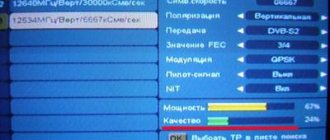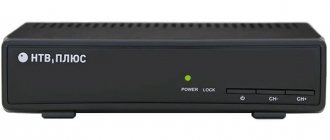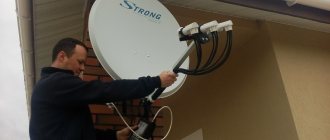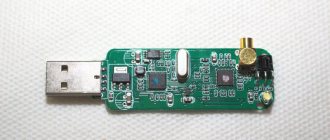What is the abbreviation DVB S2
The abbreviation DVB-S2 is, in some ways, an updated digital television broadcast format. This format replaced its predecessor - DVB-S.
The distinctive features of the two formats are, in fact, hidden in many ways, but many of the changes are not clear to the average person. If we convey the essence of the new standard to the user in simple language, then the main innovations can be listed as follows:
- The new standard supports high-quality modern video decks;
- The format is endowed with increased connection speed, which allows you to reproduce high-resolution images;
- The new standard is somewhat more reliable regarding the plan for transmitting the broadcast signal from the source to the end user;
- Many innovations have been joined by direct access to Internet networks, as well as a method of electronic news collection.
It is worth mentioning that the new DVB-S2 format is compatible with the previous technology - DVB-S, which does not mean a complete abandonment of the old and understandable one.
Installation of fiber optic networks
Unlike outdated coaxial wires, fiber optic lines use alternative methods of transmitting the generated signal.
The wire itself is a collection of thin polymerized glass filaments. An encoder and decoder are mounted at the input and output of the cable. A frequency light signal in the laser spectrum is supplied to the beginning.
The encoder decomposes it into spectra with a decimeter wavelength and feeds it onto the polymer threads of the cable structure. The laser beam is reflected many times and is instantly transmitted to the end of the cable, where it enters the decoder.
The decoder collects the spectrum into one, calculates the changing images and transmits them to the receiving device of the television screen.
The first cable models were extremely unstable to bending, tensile loads, and mechanical stress. The slightest impact could damage the structure of the polymer threads.
Currently, the design has been modified and all the disadvantages have been eliminated. The technology has not lost its innovation and is actively developing.
Unlike coaxial cables, they have the following advantages:
- Instant transfer speed.
- Multifunctionality. One cable is capable of broadcasting a TV signal and the Internet.
- Easy to install.
- The cable structure implies the laying of backup lines, to which an automatic transition occurs in the event of damage to the main ones.
- Easy restructuring. The wire can be used for laying satellite TV. Only the source of supply at the beginning changes.
DVB S2 standard: the goal of developing new technology
The new satellite standard DVB S2 successfully copes with the task of covering the shortcomings of previous standards: low speeds of the DVB-S standard and low distortion of the SAT standard.
First of all, the emergence of DVB-S2 technology was spurred by the planned mass launch of HDTV, which required the development of channel coding formats that would more efficiently use the frequency resources of satellite DVB-S2.
At the stage of typical developments, the performance of satellite-band receiving systems that were influenced by atmospheric conditions, in particular moisture, was no longer satisfactory - it was necessary to strengthen the protection against interference.
Interactive, addressable satellite networks still required more transport resources. To optimize the use of resources, it is necessary to adapt the parameters of each address stream to the conditions of a specific recipient. But previous standards did not provide this. But support for the DVB-S2 format made it possible to transmit more useful information on a standard channel for different services that are broadcast on the same channel. In addition, the satellite tuner fully supported the compatibility of the old and new standards.
Satellite broadcasting DVB-S2: technology characteristics
This situation served as the basis for the creation of the universal standard DVB-S2. On its basis, networks for distribution are provided:
- on the network for professional awareness - support for digital TV transmission from studio to studio, distribution of signals to on-air repeaters, thanks to satellite communications to deliver high-quality images on the TV;
- The DVB-S2 standard is conveniently used to support the formation of a network for data transmission or the creation of IP trunks.
The incompatibility of the mechanisms included in the DVB-S2 receiver turned out to be incompatible with some old standards. Then the developers introduced two new modes into the standard. The first, which is downward compatible, but not efficient enough, the second, although it uses all the new features, does not allow the use of a DVB-S tuner. The first is best used when providing traditional services, the second - for use in professional networks.
Nuances and mechanism for transmitting digital images over fiber optic cables
The development of cable television immediately revealed a number of problems that needed to be solved to improve technology and improve quality. These problems consisted of the following nuances:
- Digital image induction noise ratio . The encoding depends on the quality of the optical fiber. If low quality or non-standard design wire was used when wiring the television, the noise level will be high. This means distortion in the image.
Important! The encoder setup was not done properly when developing digital television transmission systems. Image calibration has not been performed. An inverted or darkened picture appeared on the receivers. This is caused by an incorrect balance of noise and induction.
- Initially, coaxial cables were used for transmission. Multichannel lines are capable of transmitting information in digital format, but in a small volume. To supply an average city with a population of 250 thousand people, you will need a whole web of coaxial cable. It was replaced by optical fiber, which has a central supply, an encoder and 1-2 branches for each region.
- Batch errors occurred during broadcasting. They were excluded by special devices of an noise-resistant code developed according to Shannon's theorem: the ratio of the attenuation of interference to the amount of induction noise when transmitting one BIT of information over a solid conductor.
One standard - different schemes
This provision of the new DVB-S2 standard has four possible modulation schemes. The first two, QPSK and PSK, are used in broadcast networks. But high-speed schemes 16 APSK 32 APSK belong to professional networks that use weaker terrestrial transmitters.
To protect against interference, this standard, as before, uses data interleaving and the imposition of a two-level code for direct correction. In most cases, code mode allows you to fix up to 12 errors, and in other cases, 8 or 10 errors. It also depends on the quality level that the receiver provides. Support for a normal image on the TV depends on this. At the same time, each tuner used must correspond to its characteristics, which should provide support in choosing.
The satellite receiver, built in many cases into the TV, DVB-S2, provides packetization of the stream at two levels, through the introduction to solve the synchronization problem when supporting the receiving system in operating conditions with a low signal-to-noise ratio. The tuner must be configured in accordance with satellite tuning according to the DVB-S2 standard. The TV's support for clear images depends on how well the receiver complies with the standard.
The latest generations of devices have a built-in satellite tuner of the DVB-S2 standard in the TV. It will receive a satellite signal, but the receiver and antenna itself are not enough, because the TV does not have a decoder, and most satellite channels are encrypted. Clear reception can be supported by installing a decoder. Therefore, do not rush to believe sellers that a receiver installed on the TV will solve the problem.
Connection and setup
For all devices, the principle of connecting and searching for programs is similar and consists of the settings for the satellite. The easiest way is to connect a branded set-top box, because it already contains settings for all transponders from which the operator’s channel packages are broadcast.
In general, the process of connecting a satellite tuner includes several stages:
- Connecting to a TV. The connection is made using RCA or HDMI cables, which output image and sound separately. A VGA cable is used for a laptop or computer.
- In the system settings of universal receivers, you need to select a broadcast satellite and transponder frequency from the list, and also set its characteristics (modulation, speed, polarization). Data can be obtained from the operator.
- The entered characteristics are confirmed by starting a scan, after which channels will be found.
- Insert the payment card with the module into the CAM connector and activate it, after which the list of found programs will expand and all content under the contract will become available.
If desired, the list of scanned channels can be sorted.
Important! Some models of set-top boxes do not have a list of transponder frequencies for satellites and will need to be entered manually. The value can also be obtained from the operator.
Digital DVB-S2 tuner built into the TV
You also need to know what standard you will be watching; this is what the TV receiver should have, and a new generation receiver is desirable. Here you need support and good advice from a specialist regarding what kind of receiver should be. But it will not be superfluous to know that basically the receiver should be of the DVB-S2 standard and therefore the receiver of another may not be similar.
There can often be confusion when purchasing a TV. So, a completely different tuner with a typical name may be built into the TV, the connection of which with the satellite has nothing in common:
- DVB T or DVB T2 is a tuner designed for digital terrestrial broadcasting. He doesn't fit.
- DVB C is a receiver designed for digital cable broadcasting. It doesn't fit either.
- DVB-S2 or DVB-S is a tuner aimed at satellite digital broadcasting. He's the right one.
So in abbreviations it is worth distinguishing only one letter, which is endowed with a fundamental meaning:
- The letter T stands for terrestrial TV;
- C – cable;
- S – satellite.
So the installation work regarding the installation of antenna equipment is virtually indistinguishable from standard installation when a satellite external receiver is used. TVs with a built-in satellite receiver support the DiSEqC 1.0 protocol, which means that they can receive satellite signals from at least four satellites using DiSEqC 4x1 switches.










